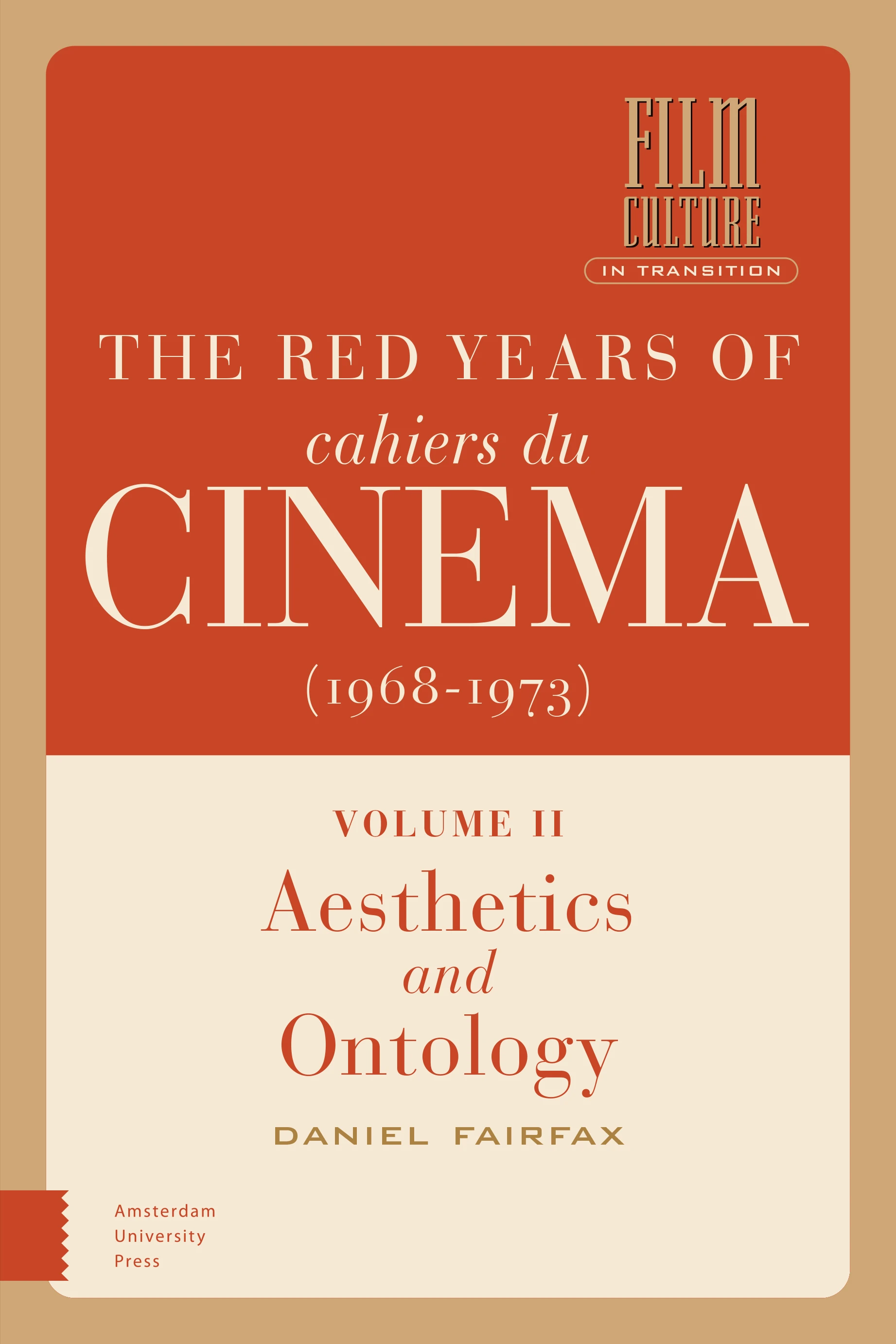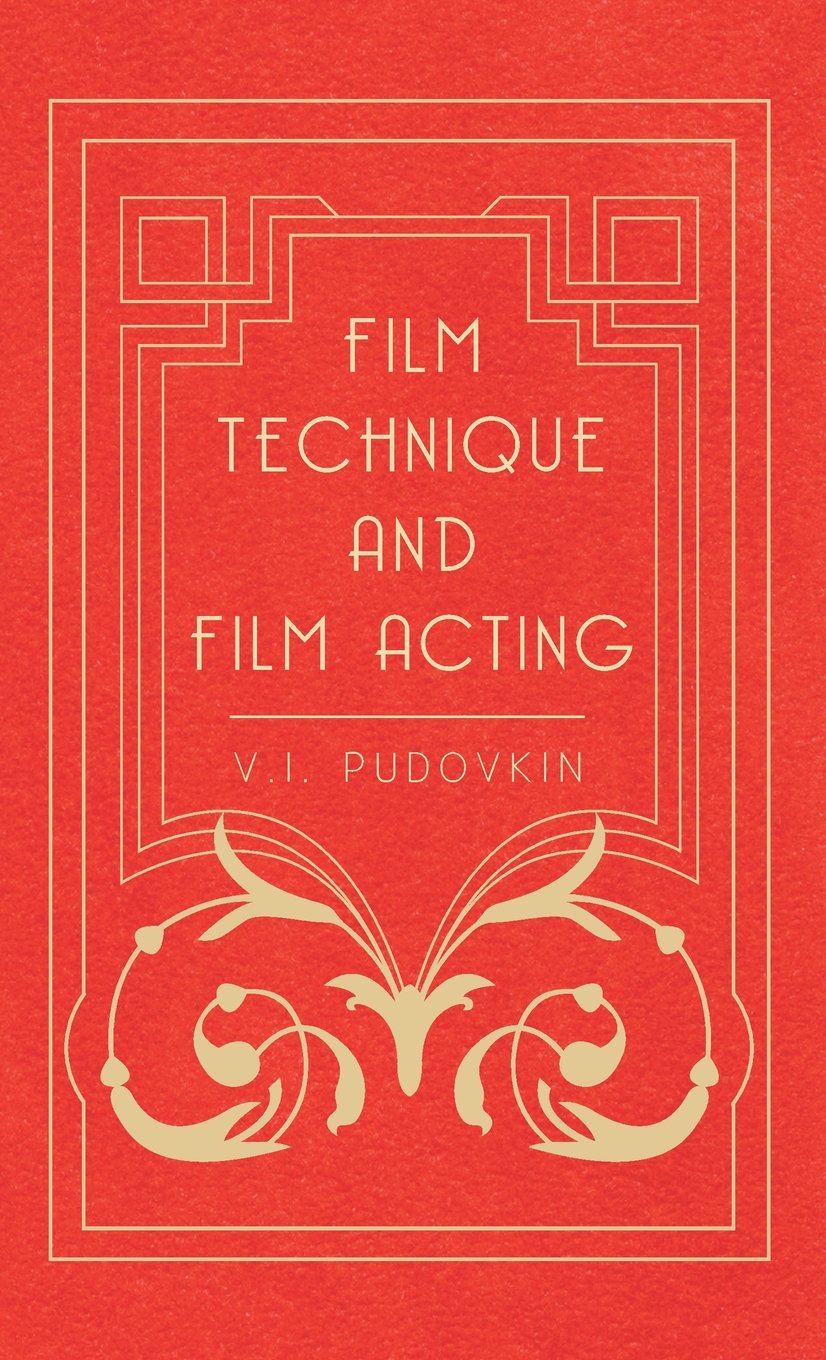Daniel Fairfax: The Red Years of Cahiers du cinéma, 1968-1973, 2 vols. (2021)
Filed under book | Tags: · 1968, aesthetics, cinema, communism, film, film criticism, film history, film theory, ideology, marxism, politics, theory


“The uprising which shook France in May 1968 also had a revolutionary effect on the country’s most prominent film journal. Under editors Jean-Louis Comolli and Jean Narboni, Cahiers du cinéma embarked on a militant turn that would govern the journal’s work over the next five years. Inspired by Marxist and psychoanalytic theory, the “red years” of Cahiers du cinéma produced a theoretical outpouring that was seminal for the formation of film studies and is still of vital relevance for the contemporary audiovisual landscape.
The Red Years of Cahiers du Cinéma (1968-1973) gives an overview of this period in the journal’s history and its aftermath, combining biographical accounts of the critics who wrote for Cahiers in the post 1968 period with theoretical explorations of their key texts.”
Publisher Amsterdam University Press, Amsterdam, 2021
Film Culture in Transition series
ISBN 9789048543908 (vol. 1), 9789048543915 (vol. 2)
427 & 455 pages
HT Quentin Darcq
Publisher (vol. 1)
Publisher (vol. 2)
OAPEN (vol. 1)
OAPEN (vol. 2)
WorldCat (vol. 1)
WorldCat (vol. 2)
Volume I, Ideology and Politics: PDF, PDF
Volume II, Aesthetics and Ontology: PDF, PDF
See also: Cahiers du Cinéma, vols. 1–4.
Comment (0)Film Technique and Film Acting: The Cinema Writings of V.I. Pudovkin (1949–)
Filed under book | Tags: · aesthetics, cinema, film, film theory

“Vsevolod Pudovkin was one of the leading Soviet film directors in the ‘golden age’ of silent cinema in the 1920s. His films – especially The Mother, The End of St Petersburg and Storm over Asia – are classics of silent cinema. Like Eisenstein, Pudovkin was also a major theorist of film. This translation of Pudovkin´s seminal writings brings together his two key books, Film Technique and Film Acting. The essays highlight the development of Pudovkin´s revolutionary thinking on scripts, directing, time, sound, and acting.”
Stanley Kubrick in a 1969 interview: “The most instructive book on film aesthetics I came across was Pudovkin’s Film Technique, which simply explained that editing was the aspect of film art form which was completely unique, and which separated it from all other art forms. The ability to show a simple action like a man cutting wheat from a number of angles in a brief moment, to be able to see it in a special way not possible except through film — that this is what it was all about. This is obvious, of course, but it’s so important it cannot be too strongly stressed. Pudovkin gives many clear examples of how good film editing enhances a scene, and I would recommend his book to anyone seriously interested in film technique.”
Translated by Ivor Montagu
Introduction by Lewis Jacobs
English edition first published in 1949
Publisher Vision Press, London, 1954
xviii+204+153 pages
via FC
JPGs, PDF, multiple formats (Internet Archive)
Comment (0)Bojana Cvejić, Goran Sergej Pristaš (eds.): Parallel Slalom: A Lexicon of Non-aligned Poetics (2013)
Filed under book | Tags: · aesthetics, cinema, contemporary art, dance, east-central europe, non-aligned movement, performance, poetics, theatre, theory, yugoslavia
![]()
“What does it take to create one’s own concepts? What does it mean to own a concept? Parallel Slalom is an edited collection of essays that attempt to address these questions from the viewpoint of artistic and theoretical practices that have been developing since the 1960s, especially in the period after the breakup of Yugoslavia in 1991. Artists, dramaturges, theorists, editors, writers or ‘cultural workers’ who write or are written about in this volume don’t always belong to the same historical, geopolitical and cultural framework that the curator Ješa Denegri called, the ‘common Yugoslav cultural space’ also because a considerable number of writers come from contexts other than those in Eastern Europe. Yet they share a kind of thought that arises from within, or close to, artistic practice as a poetical instrument of looking past art into the production of political, social and aesthetic realms.”
“Among the concepts developed are: Americanism; artivisim; acting without publicizing; Chaplinism; cinema clubs; cinematic modes of action; contextual art; delay; delayed audience; digitality; East Dance Academy; generations; group sex; laziness; operation; politics of affection and uneasiness; proceduralism; protocol; radical amateurism; reconstruction, second-hand-knowledge; slideshow; temporary zones, shelters, and project spaces; tiger’s leap into history; unburdened, aesthetically; unlearned, terminally.”
Contributions by Ric Allsopp, Jonathan Beller, Ivana Bago, Bojana Cvejić, Isabel de Naveran, Tomislav Gotovac, Owen Hatherley, Ana Janevski, Janez Janša, Marko Kostanić, Bojana Kunst, Antonia Majača, Aldo Milohnić, Goran Sergej Pristaš, Mårten Spångberg, Mladen Stilinović, Miško Šuvaković, Terminally Unschooled, Terms study group, and Ana Vujanović.
Publisher Walking Theory ‒ TkH, Belgrade, and CDU – Centre for Drama Art, Zagreb, 2013
ISBN 8690589961, 9788690589968
411 pages
via Academia.edu
Publisher (TkH)
Publisher (CDU)
WorldCat
PDF (7 MB)
Comment (0)
